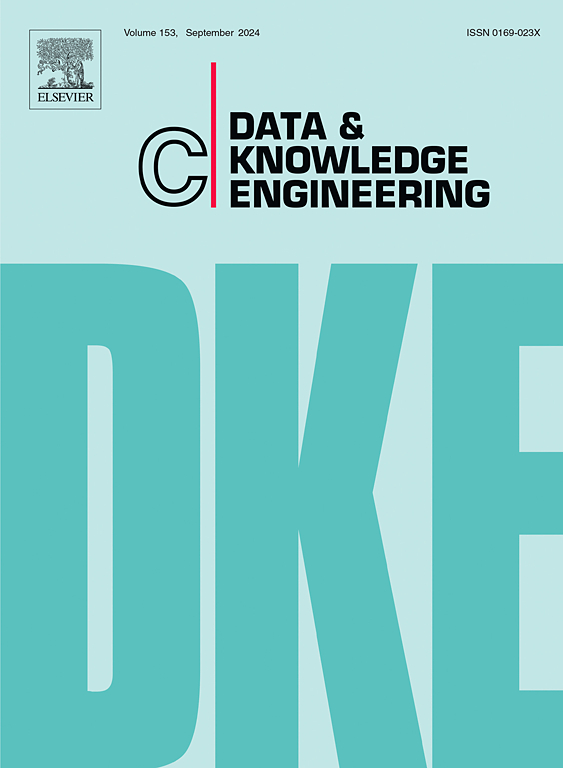Multi-feature classification for fake news detection using multiscale and atrous convolution-based adaptive temporal convolution network
IF 2.7
3区 计算机科学
Q3 COMPUTER SCIENCE, ARTIFICIAL INTELLIGENCE
引用次数: 0
Abstract
In the exponential growth of social media platforms, Facebook, Twitter, YouTube and Instagram are the main sources for providing news and information about anything at anywhere. Sometimes, fake information is quickly spread by uploading from particular people affecting the media usage of people. In this research work, a novel deep learning-based framework is proposed to effectively detect fake news for enhancing the trust of social media users. At first, the required text data is gathered from the benchmark resources and given to the preprocessing stage. Then, the preprocessed data is fed into the feature extraction phase here, the Bidirectional Encoder Representations from Transformers (BERT), Recurrent Neural Networks (RNN), and Convolutional Neural Networks (CNN) mechanisms are utilized to effectively extract the meaningful information from the data and improve the accuracy. Also, it can generate three sets of BERT, temporal, and spatial features in the extraction phase and then given to the detection phase. Here, the Multiscale and Atrous Convolution-based Adaptive Temporal Convolution Network (MAC-ATCN) is used for ultimately identifying and categorizing the false information to ensure more reliable outcomes and decision-making processes. Additionally, the Modified Osprey Optimization Algorithm (MOOA) algorithm is employed to fine-tune the parameters to prevent overfitting issues when dealing with larger data. It helps to easily address the imbalanced dataset issues by varying the hyperparameters in the training process. Finally, the overall detection performance is validated with various performance measures and compared with existing works. Also, the developed method achieved better accuracy value for dataset 1 is 93.74 % and dataset 2 is 92.82%. By effectively identifying the fake news in social media can help users to make timely informed decisions. This helps to prevent the spread of misinformation and protects individuals from harmful consequences.
基于多尺度自适应时域卷积网络的多特征分类假新闻检测
在社交媒体平台呈指数级增长的情况下,Facebook、Twitter、YouTube和Instagram是随时随地提供新闻和信息的主要来源。有时,虚假信息通过某些人的上传迅速传播,影响了人们对媒体的使用。在本研究中,提出了一种基于深度学习的新型框架来有效地检测假新闻,以增强社交媒体用户的信任。首先,从基准资源中收集所需的文本数据,并将其交给预处理阶段。然后,将预处理后的数据输入到特征提取阶段,利用变形器(BERT)、循环神经网络(RNN)和卷积神经网络(CNN)机制有效地从数据中提取有意义的信息,提高准确率。并且在提取阶段可以生成BERT、时间和空间三组特征,然后再交给检测阶段。在这里,基于多尺度和亚特鲁斯卷积的自适应时间卷积网络(MAC-ATCN)被用于最终识别和分类虚假信息,以确保更可靠的结果和决策过程。此外,采用Modified Osprey Optimization Algorithm (MOOA)算法对参数进行微调,避免在处理较大数据时出现过拟合问题。通过改变训练过程中的超参数,可以很容易地解决数据集不平衡的问题。最后,采用各种性能指标对整体检测性能进行了验证,并与现有工作进行了比较。该方法在数据集1和数据集2上的准确率分别为93.74%和92.82%。通过有效识别社交媒体中的假新闻,可以帮助用户及时做出明智的决定。这有助于防止错误信息的传播,并保护个人免受有害后果的影响。
本文章由计算机程序翻译,如有差异,请以英文原文为准。
求助全文
约1分钟内获得全文
求助全文
来源期刊

Data & Knowledge Engineering
工程技术-计算机:人工智能
CiteScore
5.00
自引率
0.00%
发文量
66
审稿时长
6 months
期刊介绍:
Data & Knowledge Engineering (DKE) stimulates the exchange of ideas and interaction between these two related fields of interest. DKE reaches a world-wide audience of researchers, designers, managers and users. The major aim of the journal is to identify, investigate and analyze the underlying principles in the design and effective use of these systems.
 求助内容:
求助内容: 应助结果提醒方式:
应助结果提醒方式:


